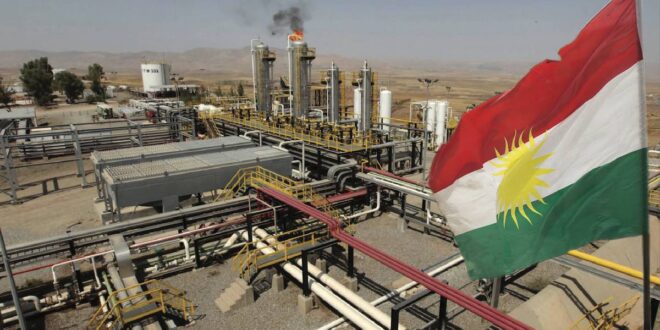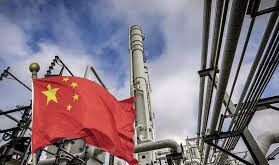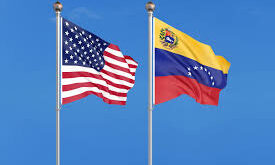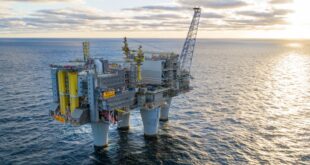There are two key reasons why China, Russia, and the U.S. have long been scrambling to secure control over Iraq’s gas sector, and these are its massive potential size and its huge geopolitical importance. Last week’s awarding of the major build-own-operate-transfer contract to a subsidiary of Chinese flagship gas firm PetroChina to develop the Nahr bin Umar onshore gas field is a clear signal of how this competition is going. Even more so, as it follows the previous week’s takeover by PetroChina from the U.S. ExxonMobil of the lead operator role on Iraq’s supergiant West Qurna 1 oil field.
For China, Iraq’s gas sector is not just potentially massive but is also highly connected to its equally potentially huge oil sector, allowing the country to leverage contracts won in Iraq’s gas fields into a wider presence across its oil fields as well. The reason for this is that around 70 percent of Iraq’s gas reserves are ‘associated’ with oil fields, and the majority of these fields are located in the southeast of Iraq, in and around its major oil hub of Basra. The biggest of these associated gas reserves are to be found in the supergiant oil fields of West Qurna, Rumaila, Nassiriya, Majnoon, Halfaya, Zubair, and Nahr bin Umar. On the other hand, most non-associated gas reserves are to be found in the north of Iraq, especially in the semi-autonomous region of Kurdistan. As analysed in depth in my new book on the new global oil market order, China efforts to inveigle Iraq to sign up to the all-encompassing ‘Iraq-China Framework Agreement’ has in large part been aimed by Beijing at securing control over these southern oil fields, with their associated gas. This was done after China’s main geopolitical ally Russia secured control over Kurdistan’s entire oil sector in late 2017, gaining much control over its non-associated gas as well, as also detailed in full in the book.
Precisely how much associated gas there is across Iraq is difficult to say with any certainty, as so much of the country’s potential oil reserves also remain unexplored. Officially, Iraq still has around 145 billion barrels of proven crude oil reserves, around 8 percent of the world’s total. However, at the same time as producing these official reserves figures, the Oil Ministry stated that the country’s undiscovered resources amounted to around 215 billion barrels. This was also the figure established in a 1997 detailed study by respected independent oil and gas firm Petrolog. However, in a full analysis conducted in 2012, the International Energy Agency (IEA) put the level of Iraq’s ultimately recoverable resources at around 246 billion barrels (crude and natural gas liquids). Officially as well, Iraq’s gas reserves currently total about 3.5 trillion cubic metres (tcm), or about 1.5% of the world total, with around three-quarters of these comprising associated gas. In its thorough 2012 analysis, though, the IEA estimated a truer figure at above 8.0 tcm, with non-associated gas estimated to be at least 30 percent of this number.
As was seen just two weeks ago in West Qurna 1, securing either an oil or a gas contract on a major oil field makes it much easier for China to take control of every element of that energy development over time. Under the terms of the ‘Iraq-China Framework Agreement’ this means that it can secure oil and gas at discounts of 30 percent or more, as also thoroughly examined in my new book. As also analysed, though, it gives the state-owned Chinese companies working on the sites the full legal right to station as many ‘security personnel’ as they wish on the land to protect their assets. It also allows China great scope to build out corollary infrastructure also agreed to by Iraq in the Framework Agreement. One notable case in point of this plan in action was the awarding in 2021 to China of contracts to build a civilian airport to replace the military base in the capital of the southern oil rich Dhi Qar governorate. The Dhi Qar region includes two of Iraq’s potentially biggest oil fields – Gharraf and Nassiriya – and China said that it intended to complete the airport by 2024. This airport project, it announced, would include the construction of multiple cargo buildings and roads linking the airport to the city’s town centre and separately to other key oil areas in southern Iraq. In later discussions connected to the 2021 Iraq-China Framework Agreement’, it was decided that the airport could be expanded later to be a dual-use civilian and military airport. The military component would be usable by China without first having to consult with whatever Iraqi government was in power at the time, a senior source who works closely with Iraq’s Oil Ministry exclusively told OilPrice.com at the time.
Another major advantage to China of securing the key oil and associated gas sites in the Basra region, albeit one that would ultimately fall under the day-to-day control of its key ally Russia, is that it would finally allow for the creation of a seamless link between Iran and the Mediterranean coast of Syria, via Iraq. This is why China and Russia are doing everything in their power in Iraq to secure control in Iraq’s sixth gas licensing round over what would be the end-point in the country of that link – the huge Akkas gas field in Anbar province. The Akkas gas field itself is one of three big gas fields that form a skewed triangle across southern Iraq, stretching from the Mansuriya field near the eastern border with Iran, down to Siba field in the south (extremely close to the key Iraqi Basra export hub), and then all the way west across to Akkas itself (extremely close to the border with Syria). Russia thought it had finally gained control over these three sites when in September 2019 its Stroytransgaz signed a preliminary contract with Iraq’s Oil Ministry to develop the hitherto virtually unknown Block 17 in Iraq’s lawless wasteland Anbar province, as also analysed in depth in my new book. This route has long been the key link required to build a ‘land bridge’ from Tehran to the Mediterranean Sea by which Iran and Russia could exponentially increase the scale and scope of weapons delivery into southern Lebanon and the Golan Heights area of Syria to be used in attacks on Israel, as also analysed in depth in my new book on the new global oil market order. The core aim of this policy was to provoke a broader conflict in the Middle East that would draw in the U.S. and its allies into an unwinnable war of the sort seen recently in Iraq and Afghanistan, and which may soon be seen as the Israel-Hamas War escalates.

 Iran Energy News Oil, Gas, Petrochemical and Energy Field Specialized Channel
Iran Energy News Oil, Gas, Petrochemical and Energy Field Specialized Channel



